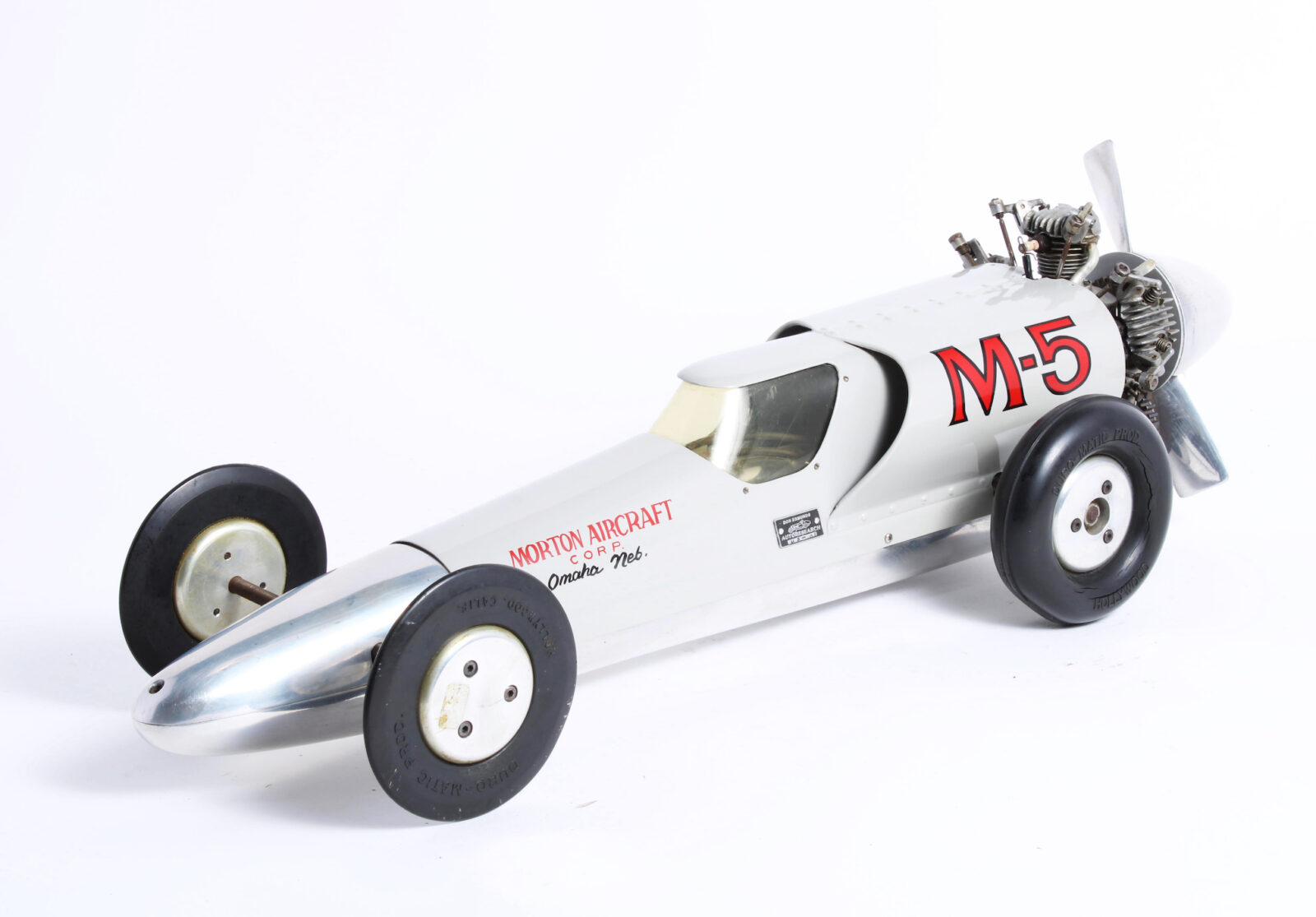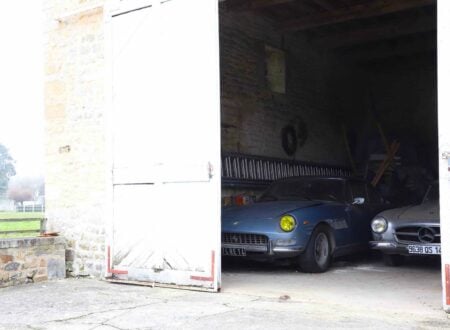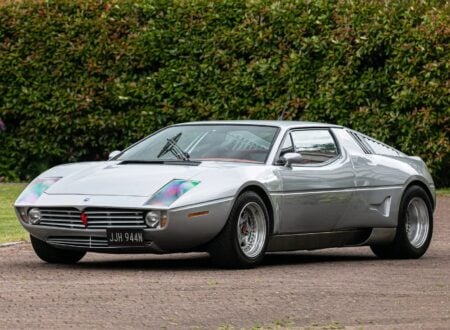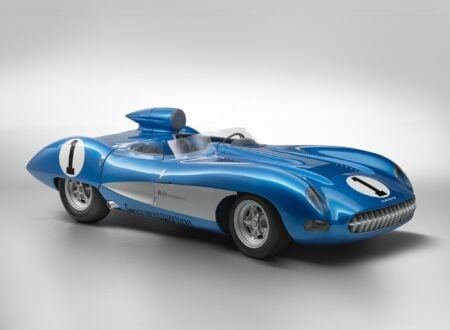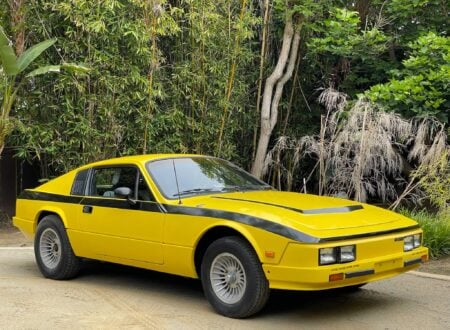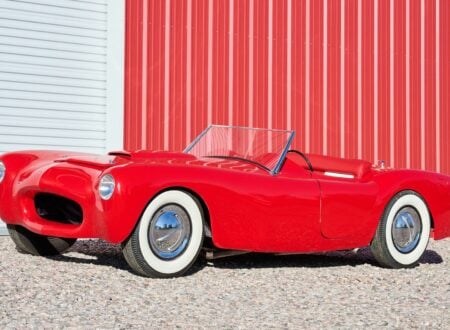This is a vintage Morton M5 radial aero engine-powered tether car. It has a rear-mounted five-cylinder radial engine that runs on a mix of methanol and castor oil with a spark ignition.
Interestingly, that rear-mounted propeller is actually used for keeping the air-cooled engine from overheating, the engine is geared to a drive shaft connected to the rear axle driving the rear wheels.
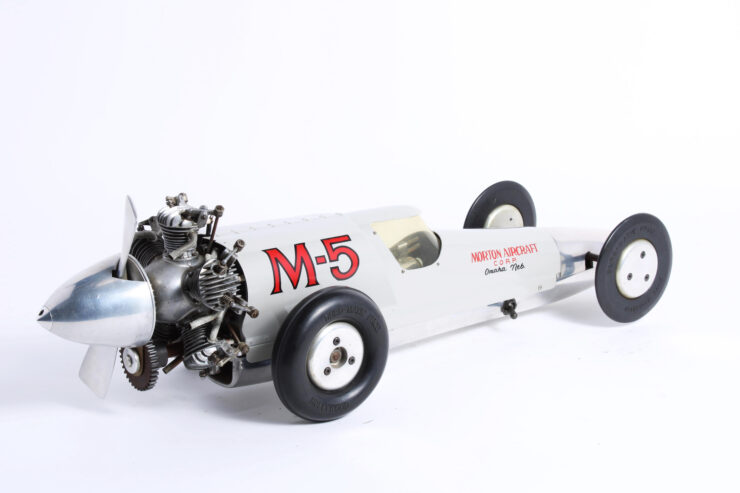

The history of tether car racing can be traced back to the 1930s in the United States. Hobbyists began creating small internal combustion-powered model race cars that could be tethered to a pole and raced in circles.
These cars were individually handmade initially, with kits becoming available later. They were generally made from materials like wood, metal, and rubber. Almost all tether cars are powered by small internal combustion engines borrowed from model airplanes.
To race, these cars were attached to a central pivot with a wire or cable, allowing them to race around in a circle at high speeds. Tracks were circular and ranged from small to relatively large, with the cars reaching speeds that sometimes exceeded 100 mph.
By the 1940s, tether car racing had grown in popularity, with tracks appearing in many parts of the U.S. The hobby also began to gain traction in other countries, including Australia and parts of Europe.
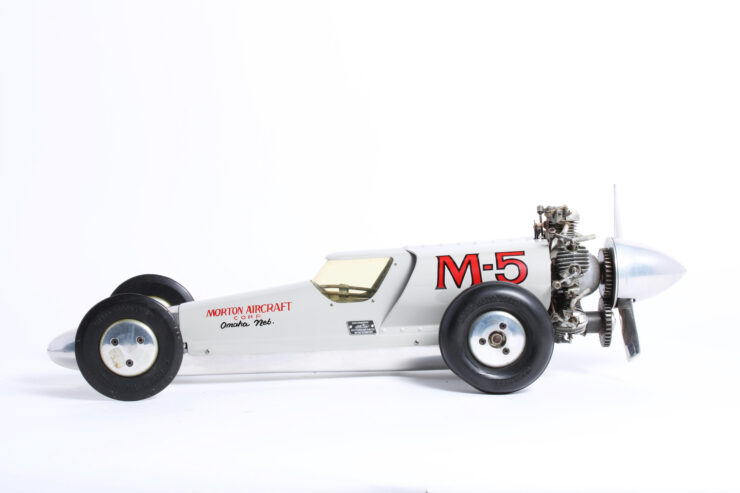

Following World War II, the popularity of tether car racing began to wane, facing competition from emerging hobbies and other forms of entertainment. However, dedicated enthusiasts kept the hobby alive, and it has seen various resurgences over the years. Even though it never regained the immense popularity it once had, tether car racing continues to have a dedicated following.
With advancements in technology, modern tether cars are more sophisticated and can achieve even greater speeds.
They still retain many of the characteristics of the original cars, including the use of internal combustion engines and electric motors, but are now made with more advanced materials and engineering knowhow.
The tether car you see in this article is powered by a Morton M5 radial engine. The design of this engine was closely based on the full-size Velie radial aircraft engine made from 1928. The M5 was first produced in the 1940s and it was the first miniature radial engine made for model airplanes.
This tether car measures in at 24 inches long and it’s now due to cross the auction block with Bonhams on the 10th of October with a price guide starting at $1,500 USD. If you’d like to read more about it or register to bid you can visit the listing here.
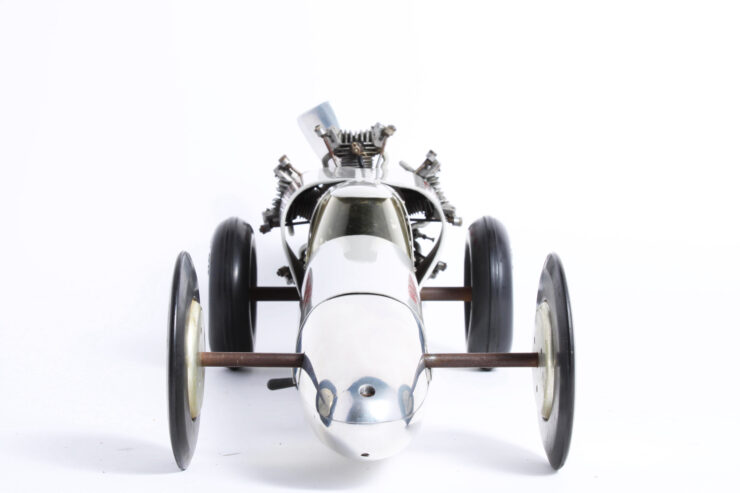
Images courtesy of Bonhams

